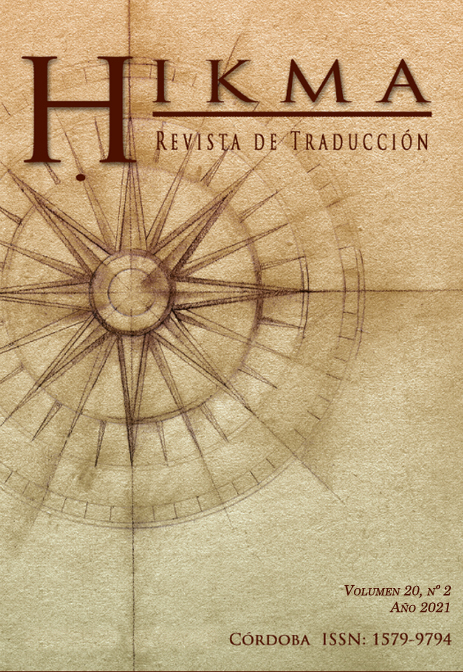Intercultural mediation and migrant children’s role in communication placed in a children’s safe center
Main Article Content
Abstract
For the past few years, the south of Spain has experienced an increase in unaccompanied migrant children’s arrival. Furthermore, intercultural mediation (IM) has been a solution to society’s communication needs for some decades. However, the insecurity and lack of recognition regarding this profession results in the rise of non-professional profiles such as child language brokering (CLB). The following case study focuses on two forms of communication that take place in a children's safe center located in the province of Cadiz and belonging to the Junta de Andalucía (Andalusian Regional Government) –IM and CLB. The main aims of this case study are (a) to present CLB carried out by migrant children living in this center and the impact CLB produces on them; and (b) to compare it with the IM service. In order to achieve this, the context where this study is placed will be presented –unaccompanied migrant children and children’s safe centers. Moreover, professionals and non-professionals who take part on communication situations will be described. The practical section of this paper is based on data collected by means of various methods –a personal interview with the current mediator and a survey distributed to the center’s social educators. In conclusion, the results will be triangulated and CLB particularities in a migrant children’s safe center will be discussed.
Downloads
Article Details

This work is licensed under a Creative Commons Attribution-NonCommercial-ShareAlike 4.0 International License.
Authors who publish with this journal agree to the following terms:
1. Authors retain copyright and grant the journal right of first publication with the work simultaneously licensed under a Creative Commons Attribution License that allows others to share the work with an acknowledgement of the work's authorship and initial publication in this journal.
2. Authors are able to enter into separate, additional contractual arrangements for the non-exclusive distribution of the journal's published version of the work (e.g., post it to an institutional repository or publish it in a book), with an acknowledgement of its initial publication in this journal.
3. Authors are permitted and encouraged to post their work online (e.g., in institutional repositories or on their website) prior to and during the submission process, as it can lead to productive exchanges, as well as earlier and greater citation of published work (See The Effect of Open Access).

